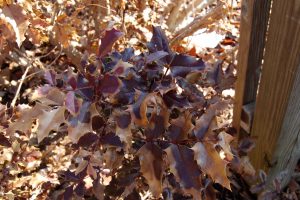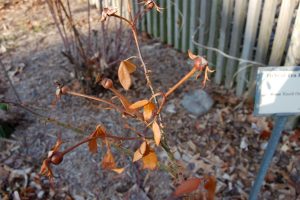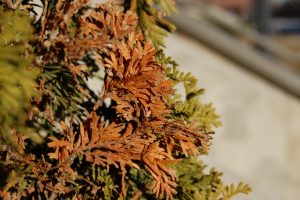Winter’s howling winds and frigid temperatures are challenging for all woody landscape plants. Although our plants are fully dormant at this time, the plant tissue is still subject to losing too much water – a condition called desiccation.
This year’s unusually heavy and consistent snow cover provides good insulation, and most plants went into winter with a good moisture supply this year. However, when the ground is frozen solid and freezing temperatures are accompanied by high winds, the plants continue to lose moisture without being able to replenish the supply.
Evergreens, and, in particular, broadleaved evergreens such as rhododendron, mahonia and holly, are the most susceptible, because they have a greater surface area through which to lose water compared to deciduous plants. Evergreens that have suffered from winter desiccation typically have beige to brown leaf edges that are curled, or they may show red or purple discoloration. But even deciduous plants (those that lose their leaves in winter) continue to lose water throughout the winter. Severe desiccation will be obvious as dead twigs and buds. Some twigs will leaf out in spring only to die back later in summer when additional stress such as heat or drought apply additional pressure.
We recommend delaying pruning chores a bit this spring so that the toll of winter injury can be
assessed. Dead tissue can be removed anytime, but cutting into live tissue leaves the remaining stem more vulnerable to further drying.


